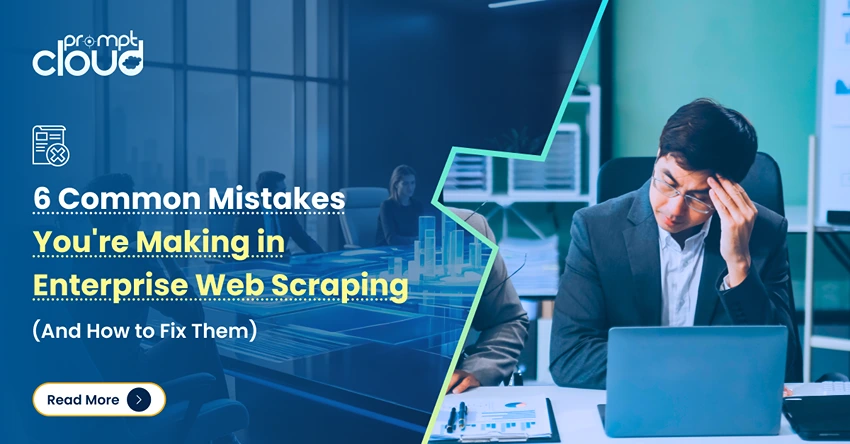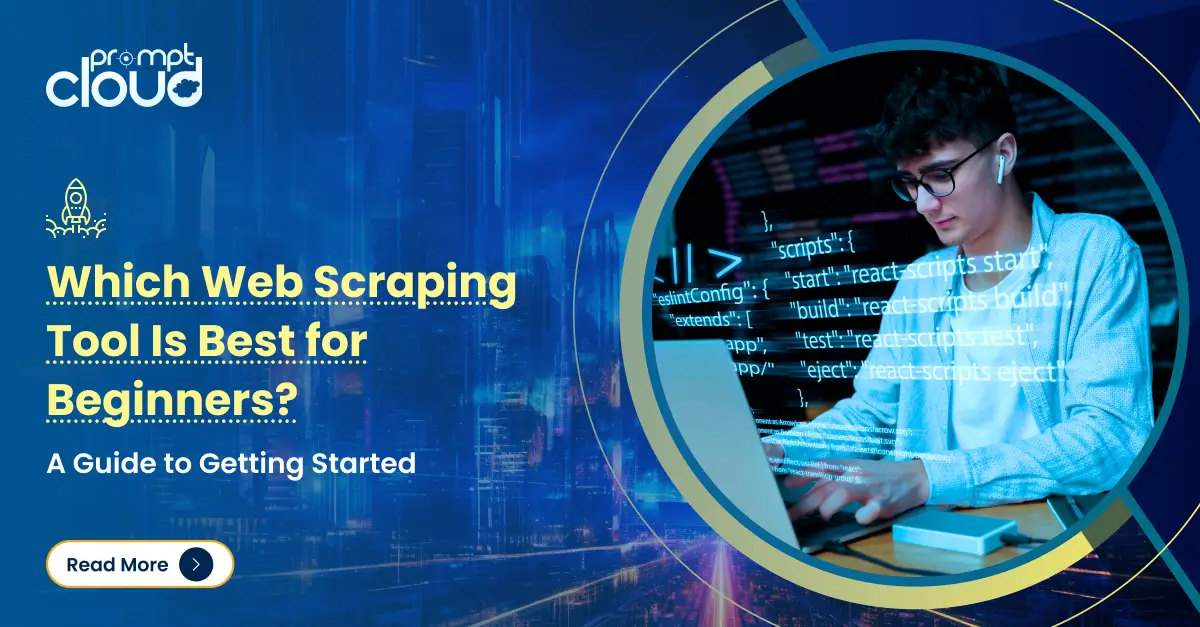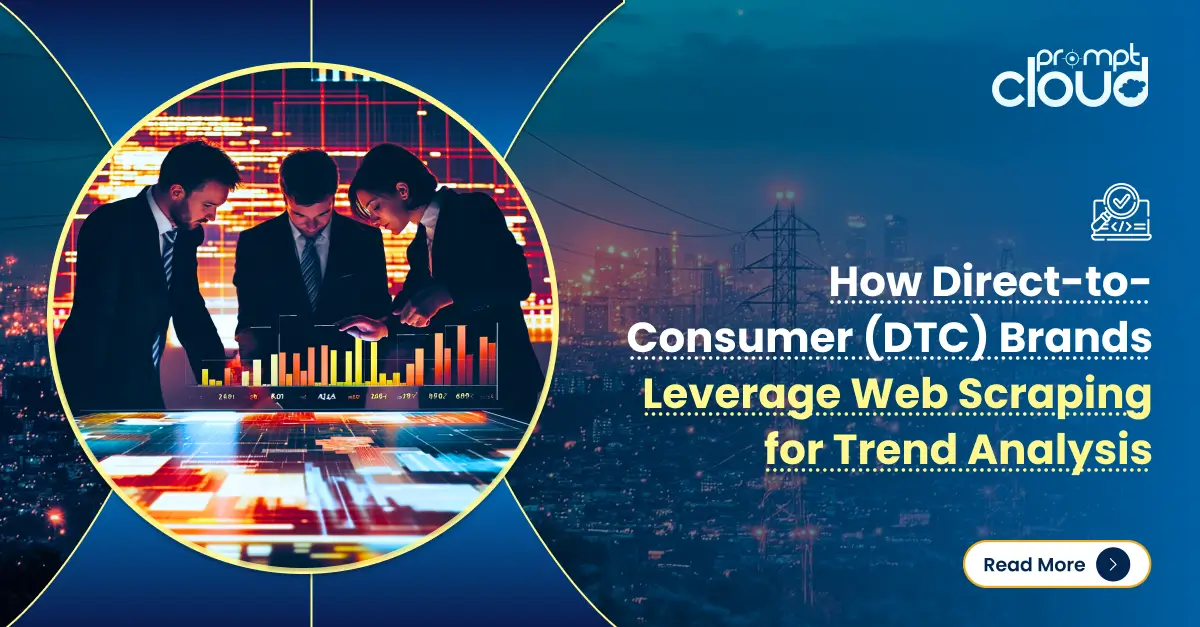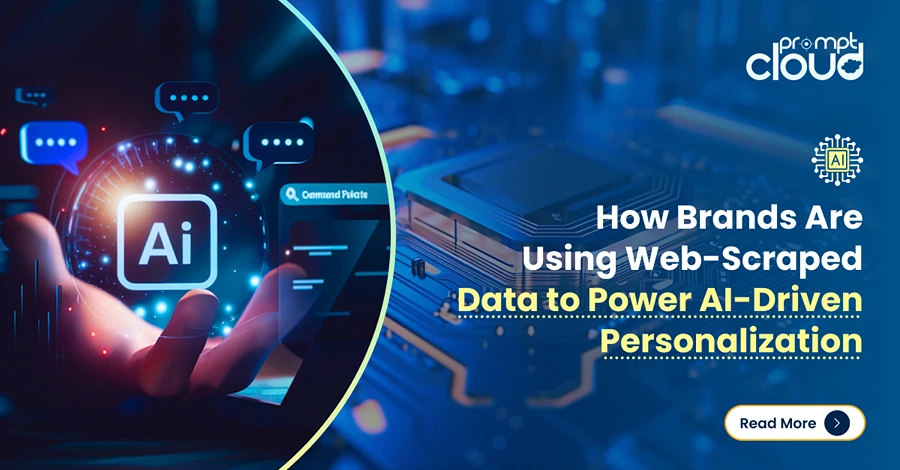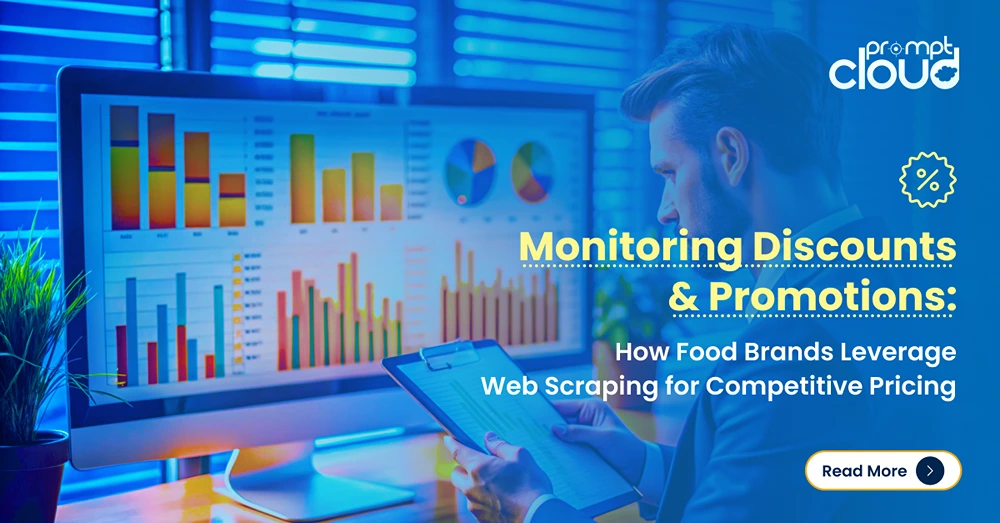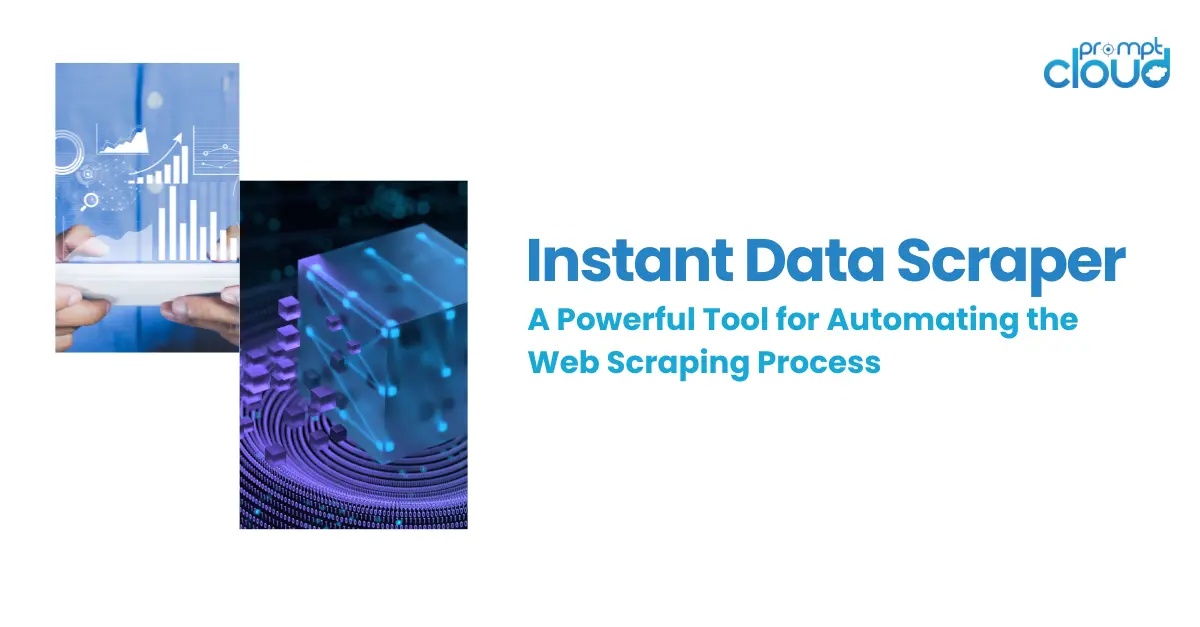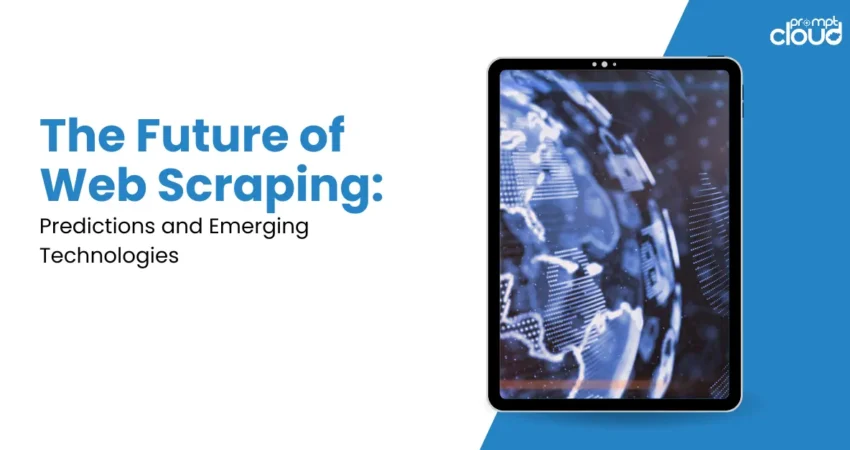
The future of web scraping is poised at an exciting juncture, with advancements in technology and shifts in data usage policies shaping its trajectory. As businesses and researchers increasingly rely on web-scraped data for competitive intelligence, market research, and automation, the tools and methodologies of web scraping are evolving to meet these demands more efficiently and ethically. Here are some predictions and emerging technologies that are likely to influence the future of web scraping:
Increased Integration of AI and Machine Learning
The integration of Artificial Intelligence (AI) and Machine Learning (ML) into web scraping technologies marks a transformative shift in how we approach data extraction from the web. These advanced technologies not only promise to refine the process in terms of efficiency and effectiveness but also open up new vistas for data analysis and application that were previously unthinkable. Let’s delve deeper into how AI and ML are poised to revolutionize web scraping:
AI and ML algorithms can significantly improve the precision of data extraction by understanding the semantics of the web content. For instance, AI models trained in Natural Language Processing (NLP) can discern the context and meaning behind the text on a webpage, allowing for the extraction of more relevant and precise information. This is particularly beneficial in sectors like market research or competitive analysis, where the quality and relevance of data directly impact the insights derived.
Advancements in Natural Language Processing (NLP)
Advancements in Natural Language Processing (NLP) are rapidly changing the landscape of data extraction, particularly from unstructured web content which constitutes a significant portion of the internet. NLP, a branch of artificial intelligence, focuses on the interaction between computers and humans through natural language. Its integration into web scraping technologies is not just an enhancement; it’s a revolution that expands the horizons of what can be achieved through data extraction. Let’s explore the depths of this integration and its implications further.
The ability to gauge public sentiment towards products, services, or brands is invaluable for businesses. NLP advancements have made sentiment analysis more sophisticated, allowing for fine-grained analysis of customer feedback and social media mentions. This doesn’t just highlight whether sentiments are positive or negative; it delves into the intensity of these sentiments and the specific aspects they pertain to. Such detailed analysis can guide product development, marketing strategies, and customer service improvements.
More Robust Anti-Scraping Measures and Countermeasures
As web scraping becomes more prevalent, websites are likely to implement more sophisticated anti-scraping measures to protect their data. This could include more complex CAPTCHAs, behavioral analysis to detect bots, and dynamic data rendering techniques. In response, scraping technologies will need to evolve to navigate these barriers, possibly leveraging AI to mimic human browsing patterns more closely or adopting more sophisticated methods of CAPTCHA solving.
Ethical Scraping and Compliance with Legal Standards
With growing concerns over privacy and data protection, ethical web scraping practices will become more critical. This includes adhering to robots.txt files, respecting copyright laws, and complying with international data protection regulations like GDPR. Tools and platforms that prioritize ethical scraping and data privacy will gain prominence, and we might see the development of standardized frameworks and guidelines for ethical web scraping.
Greater Emphasis on Real-time Data Extraction
The acceleration of digital transformation across industries has ushered in an era where agility and speed are not just valuable; they are paramount. In this context, the emphasis on real-time data extraction represents a critical evolution in web scraping technologies, aiming to match the pace of decision-making required in today’s fast-moving markets. The implications of this shift toward real-time data are profound, impacting everything from financial trading to customer service, and setting the stage for innovations that could redefine competitive edges.
In the financial sector, real-time data extraction is not just beneficial; it’s essential. The difference of a few seconds can significantly impact trading decisions and outcomes. Advanced web scraping tools that can deliver financial news, stock prices, and market sentiment in real-time are becoming indispensable assets for traders and financial analysts.
The retail sector is increasingly adopting dynamic pricing models that adjust prices based on market demand, competitor pricing, and inventory levels. Real-time data extraction allows retailers to monitor these variables continuously and adjust their pricing strategies instantly. This capability can significantly enhance competitiveness, especially in e-commerce, where price comparison is common among consumers. Retailers leveraging real-time data can optimize pricing to improve sales volumes and profit margins while maintaining market competitiveness.
Cloud-based Scraping Services
As the digital economy continues to expand, the demand for data-driven decision-making intensifies. This has led to an increased reliance on web scraping as a method for gathering the vast amounts of data required for analysis, market research, and competitive intelligence. Cloud-based web scraping services are at the forefront of this trend, revolutionizing how organizations approach data extraction by offering powerful, scalable, and user-friendly solutions. Here’s a deeper look into the world of cloud-based scraping services and their potential impact:
Advantages of Cloud-based Scraping Services
1. Scalability: One of the most significant advantages of cloud-based services is their ability to scale effortlessly. Whether you’re looking to scrape data from a handful of pages or millions, these platforms can dynamically allocate resources to meet demand, ensuring efficient data extraction without the need for manual intervention.
2. Cost-Effectiveness: By leveraging shared resources in the cloud, these services can offer competitive pricing models that make web scraping accessible to businesses of all sizes. This eliminates the need for substantial upfront investments in hardware and software, reducing the barriers to entry for utilizing web scraping technologies.
3. Maintenance and Upgrades: Cloud-based services handle all aspects of maintenance and updates, ensuring that the scraping technology stays current with the latest web standards and security practices. This offloads a significant burden from users, allowing them to focus on analyzing the data rather than worrying about the technicalities of scraping.
4. Advanced Features: These platforms often come equipped with advanced features that enhance the efficiency and effectiveness of web scraping operations. Automatic IP rotation helps evade anti-scraping measures by making requests from different IP addresses, while high-speed data processing ensures that large volumes of data can be extracted and analyzed quickly.
5. Integration Capabilities: Many cloud-based scraping services offer APIs and integrations with popular data analysis tools and platforms. This allows for seamless workflows where extracted data can be automatically fed into analytical models, dashboards, or databases for real-time analysis.
Browserless Scraping Technologies
Emerging technologies may offer more efficient ways to simulate browser environments or even bypass the need for a browser altogether for scraping tasks. This could significantly reduce the resources required for web scraping operations, enabling faster and more efficient data collection.
Conclusion
The future of web scraping is both promising and challenging. As technologies advance, the balance between accessing publicly available data and respecting privacy and legal boundaries will be crucial. Innovation in AI, ML, and NLP, alongside a commitment to ethical scraping practices, will shape the development of web scraping tools, making data more accessible and valuable for businesses and researchers worldwide. In this evolving landscape, staying informed about technological and regulatory changes will be key to leveraging the full potential of web scraping.
Frequently Asked Questions
What is web scraping technologies?
Web scraping technologies refer to the methods, tools, and software used to extract data from websites. This process involves programmatically accessing web pages, parsing the HTML code, and then extracting useful information like text, images, links, and metadata. The extracted data can be saved into a local file or database in a structured format for analysis, reporting, or further processing. Web scraping is widely used across various industries for tasks such as market research, competitive analysis, price monitoring, lead generation, and content aggregation.
Key Components of Web Scraping Technologies:
- HTTP Requests: At the core of web scraping is the ability to programmatically send HTTP requests to retrieve web pages. Tools like curl in command line, libraries like requests in Python, or HttpClient in .NET are commonly used for this purpose.
- HTML Parsing: Once the HTML content of a web page is fetched, it needs to be parsed to extract the required data. HTML parsing libraries like BeautifulSoup and lxml in Python, or Jsoup in Java, provide functionalities to navigate the structure of HTML documents and extract data based on tags, classes, or IDs.
- Web Browsers Automation: For dynamic websites that heavily rely on JavaScript to load content, tools that automate web browsers are used. These tools, such as Selenium, Puppeteer, and Playwright, mimic human interaction with the browser, allowing for the execution of JavaScript and AJAX calls necessary to access the content.
- Data Storage: The extracted data is typically stored in databases or written to files in formats like CSV, JSON, or Excel for further analysis or processing.
- Data Cleaning and Formatting: Extracted data often requires cleaning and transformation to remove unnecessary characters, correct formatting, or convert data types. This step is crucial to ensure the data is accurate and usable.
Which tool is used for web scraping?
Various tools and libraries are available for web scraping, catering to different levels of expertise, programming languages, and specific needs. Here’s an overview of some popular tools used for web scraping:
Beautiful Soup
- Language: Python
- Use: Best for simple HTML and XML parsing and data extraction from static websites.
- Features: Easy to use for beginners, powerful when combined with Python’s requests library for fetching web content.
Scrapy
- Language: Python
- Use: Ideal for building scalable web crawlers and scraping complex websites.
- Features: Provides a complete framework for web scraping and crawling, supporting item pipelines, data export, and middleware for handling different scenarios.
Selenium
- Language: Supports multiple languages including Python, Java, C#, Ruby, and JavaScript.
- Use: Initially designed for automating web browsers for testing purposes, it’s also used for scraping dynamic content rendered through JavaScript.
- Features: Can control a web browser to mimic human browsing behavior, making it possible to scrape data from websites that require login or interaction.
Puppeteer
- Language: JavaScript (Node.js)
- Use: Suited for scraping dynamic websites and single-page applications that rely heavily on JavaScript.
- Features: Provides a high-level API to control Chrome or Chromium over the DevTools Protocol, allowing for tasks like rendering JavaScript, taking screenshots, and generating PDFs of web pages.
Playwright
- Language: Node.js, Python, C#, and Java
- Use: Similar to Puppeteer but designed to support multiple browsers (Chrome, Firefox, and WebKit).
- Features: Automates browser actions for web scraping, testing across browsers, and capturing screenshots and videos.
Cheerio
- Language: JavaScript (Node.js)
- Use: Best for server-side DOM manipulation, akin to jQuery, enabling fast and efficient scraping of static websites.
- Features: Parses markup and provides an API for traversing/manipulating the resulting data structure; lighter than Puppeteer for static content.
Octoparse
- Language: N/A (GUI-based tool)
- Use: Suitable for non-programmers or those who prefer a visual interface over writing code.
- Features: A point-and-click interface to select data for extraction, handling both static and dynamic websites. It offers cloud services for running crawlers.
ParseHub
- Language: N/A (GUI-based tool)
- Use: Designed for users without programming knowledge to scrape websites using a powerful visual tool.
- Features: Supports AJAX and JavaScript-heavy websites, with a user-friendly interface for selecting data points and exporting data.
What are the different methods used for web scraping?
Web scraping encompasses various methods to extract data from websites, each suited to different types of web content and user needs. Here’s an overview of some commonly used web scraping methods:
HTTP Requests
This method involves sending HTTP requests to retrieve the HTML content of web pages directly. It’s most effective for static websites where the content doesn’t depend on JavaScript execution. Libraries like requests in Python and HttpClient in .NET are popular for making HTTP requests.
Pros: Simple and fast for static content.
Cons: Ineffective for dynamic content loaded through JavaScript.
HTML Parsing
Once you have the HTML content, parsing libraries such as Beautiful Soup (Python), Cheerio (Node.js), or Jsoup (Java) can navigate the HTML DOM tree and extract specific data. This method is ideal for extracting data from static pages or the HTML source after JavaScript execution.
Pros: Flexible and precise extraction of data elements.
Cons: Requires understanding of the web page structure.
Browser Automation
Tools like Selenium, Puppeteer, and Playwright automate a real web browser, allowing you to scrape dynamic content that requires JavaScript execution or interaction with the page (e.g., clicking buttons, filling out forms). These tools can mimic human browsing behavior, making them powerful for complex scraping tasks.
Pros: Can handle dynamic, JavaScript-heavy websites.
Cons: More resource-intensive and slower than direct HTTP requests.
API Requests
Many websites load data dynamically through APIs. By inspecting network traffic (using tools like the Network tab in browser DevTools), you can identify the API endpoints and request data directly. This method is efficient and often returns data in a structured format like JSON.
Pros: Fast and efficient, provides structured data.
Cons: Requires understanding of API endpoints and may involve authentication.
Headless Browsers
Headless browsers are like regular browsers but without a graphical user interface. Tools like Puppeteer and Playwright can run in headless mode, executing JavaScript and rendering web pages in the background. This method is useful for automated testing and scraping of dynamic content.
Pros: Full rendering of dynamic content, including JavaScript execution.
Cons: Similar to browser automation, it’s more resource-intensive than other methods.
Web Scraping Frameworks
Frameworks like Scrapy (Python) offer a full-fledged environment for web scraping, providing features for extracting data, following links, and handling errors. These frameworks are designed for building scalable web crawlers and managing multiple scraping tasks simultaneously.
Pros: Comprehensive solution with built-in features for complex scraping projects.
Cons: Might have a steeper learning curve for beginners.
Optical Character Recognition (OCR)
For scraping data from images or scanned documents, OCR technologies like Tesseract can convert visual representations of text into machine-readable text. This method is particularly useful for extracting data from PDFs, images, or captchas.
Pros: Enables text extraction from images and scanned documents.
Cons: May result in inaccuracies with low-quality images or complex layouts.










